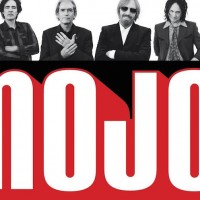The story of “Luna” begins in Tulsa, Oklahoma. Shelter Records, with whom the Heartbreakers were signed when their eponymous debut was released, was founded and run by Denny Cordell (who produced the album) and Leon Russell (in whose house “Hometown Blues” was partially recorded). They operated studios in both Los Angeles and in Tulsa, Russell’s hometown.
“I have to stay in Los Angeles for obvious reasons,” Cordell told Billboard’s Bob Kirsch in 1973. “This is where much of the world’s record business is concentrated, and you have to be in a major center like LA. But by the same token, I don’t have the money to compete exclusively here. I simply can’t compete with all the other record and publishing companies. But what I have got is the Oklahoma facilities and the offer of a genuine workshop atmosphere where everyone is intimate with one another, and we will pay individual attention to each artist.”
Unfortunately, Cordell and Russell had a falling out in 1976, causing Russell to walk away from Shelter Records. As a result, that “genuine workshop atmosphere” would be no more. Engineers Noah Shark and Max Reese were sent to Oklahoma to recover some equipment from the Tulsa studio. They decided to take advantage of the situation presented to them and invited the group they were currently working with.
“‘Hey,’” Tom Petty remembers Shark saying to him, “‘why don’t you guys fly down and we’ll cut a track before we take the gear out? Because no one’s around and we can do it for free.’ So [original drummer] Stan [Lynch] and I, just on a lark, flew to Tulsa. … It was an empty studio. We got there and it was just empty. … But there was a Hammond organ and some drums. And I made [‘Luna’] up on the spot, and we cut it with me playing the organ and Stan playing the drums.” He goes on to note that “it’s very improvised, especially the ending. You hear all these weird stops and little licks. It’s just us jamming together.”
After a chord progression and lyrics were fleshed out in the studio, Petty and Lynch cut the track live with vocals, organ, and drums. Stan proceeded to add a haunting ARP String Ensemble synthesizer part. His utilization of the pitch bender creates a perfectly eerie effect; not only is it the most memorable part of the song, it is arguably the best.
Not that there aren’t other good performances on the track. Guitarist Mike Campbell, bassist Ron Blair and keyboardist Benmont Tench got their pass at “Luna” after Tom and Stan returned from Tulsa, and all three turn in impressively subtle takes on their respective instruments. In addition to some light picking in the verses, Mike effectively uses an EBow to heighten the song’s mysterious soundscape. His use of this device, and some of his slide guitar interjections, end up serving a similar purpose as the ARP, which once again proves Campbell’s uncanny ability to recognize what makes a song great and work around or add to it.
If Tom’s original organ part and Stan’s synthesizer performance were kept and unaltered, it appears that Benmont is relegated to grand piano on “Luna.” Although it’s not in the forefront of the song, it has a foreboding presence underneath the surface, adding a fantastic dark texture to the verses and bridge.
Ron doesn’t do anything too crazy, but his ever-steady bassline acts as a great anchor for the track. Seeing as there is no clear rhythm guitar track, and Tom’s organ line is quite sparse as he sings, Ron’s bass is actually one of the more distinct instruments at the heart of the song. And assuming Stan performs all the additional percussion, he sneaks in a very smart cabasa part in the verses. He also contributes some unexpected sleigh bells in the instrumental bridge, which pan slowly from the left speaker over to the right speaker and back again. (This effect can best be heard by listening to the song with headphones.)
Thrown together as they may have been, Tom conjures up some engaging images with the lyrics. The initial lyric, in particular — “white light cut a scar in the sky, thin line of silver” — is actually one of the most intriguing opening lines on the album. For anyone who has ever dealt with stress, confusion, or grief in the nighttime hours, this tale of staring out at the moon, looking and/or praying for escape, is very relatable. “Luna, come to me tonight, I am a prisoner. Luna, glide down from the moon.” While this song is obviously not inspired by Bruce Springsteen whatsoever, at least from a musical standpoint, it wouldn’t seem out of place to see these words alongside some of the Boss’ Darkness on the Edge of Town lyrics.
Overall, “Luna” has a very unique and interesting atmosphere. Much like the first three cuts on Tom Petty and the Heartbreakers, it has a sound that hasn’t been duplicated many times over the course of the group’s career, if at all. But although it boasts some good performances and noteworthy production, “Luna” does not particularly rise to the level of the album’s other tracks. Because of its improvisatory nature, it does not have much of a direction — making it a black sheep on an album largely consisting of black sheep. The ARP, as well as some of Mike and Benmont’s input, does help the song build somewhat, but not nearly enough.
The off-kilter ending is very telling; it’s certainly interesting, and even kind of cool, with Stan’s broken fills and cymbal grabs and Tom’s variations on the organ rhythm. But it’s ultimately anticlimactic, which is not typical of this record, or really, many songs at all in the Heartbreakers’ catalog. Luckily, they got back on track in a very big way on the very next, and final, song on the album.


